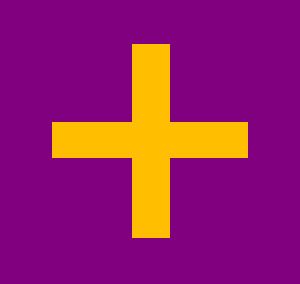Formation 16 April 1346 Appointer Hereditary | Abolition 2/4 December 1371 | |
 | ||
Between 1345 and 1371, the Serbian monarch was titled emperor (tsar), the full title being Emperor of the Serbs and Greeks (Serbian: цар Срба и Грка/car Srba i Grka) in Serbian and basileus and autokrator of Serbia and Romania ["the land of the Romans"] (Greek: βασιλεὺς καὶ αὐτοκράτωρ Σερβίας καὶ Ῥωμανίας) in Greek. The Serbian Empire was ruled by only two monarchs; Stefan Dušan (r. 1331–55) and Stefan Uroš V (r. 1355–71). Two other claimants of the title ruled in Thessaly, Central Greece.
Contents
Establishment and titulature
Taking advantage of the Byzantine civil war of 1341–1347 by alternately supporting both sides of the conflict, the Serbian king Stefan Dušan expanded his state southwards, conquering Albania and most of Macedonia by 1345, with the exception of the great fortress cities of Serres and Thessalonica. This growth in power made Serbia the de facto dominant state in the Balkans, and fuelled Dušan's imperial ambitions: already in early 1343, the Serbian ruler elevated his titles to "king and autokrator of all the Serbian and Maritime Lands and čestnik of the Greek [Byzantine] Lands".
Following his conquest of Serres, which crowned his conquest of Macedonia, in November or December 1345 Stefan Dušan proclaimed himself emperor (basileus), laying claim on the Byzantine imperial inheritance. On 16 April 1346 hewas crowned emperor at Skopje in an assembly attended by the elevated Serbian Patriarch, and also the Bulgarian Patriarch and the Archbishop of Ohrid. His imperial title was recognised by Bulgaria and various other neighbors and trading partners but not by the Byzantine Empire. Mount Athos addressed him as Emperor, though rather as Emperor of Serbs than Emperor of Serbs and Greeks. In Serbian charters, ethnic terms are used – "Emperor of the Serbs and Greeks" (цар Срба и Грка).
In Greek, the title was "basileus and autokratōr of Serbia and of Romania" (βασιλεὺς καὶ αὐτοκράτωρ Σερβίας καὶ Ῥωμανίας). The use of "Romania" (i.e. the land of the Romans, the Byzantine Empire) and not the usual Byzantine formula "of the Romans" was probably deliberately chosen; although in his Law Code Dušan claimed the direct succession to all Byzantine emperors from the time of Constantine the Great, he lacked possession of Constantinople and of the Ecumenical Patriarchate, which alone conferred full legitimacy to a Byzantine ruler. Notably, when the Byzantines came around to recognizing Dušan's imperial title, it was only for Serbia proper, much as they had done with the Bulgarian Tsar Simeon 400 years earlier. The contemporary Byzantine writers also clearly distinguished between the ancestral Serbian lands, where Dušan's son Stefan Uroš ruled as king, and the conquered lands "in Romania", where Dušan (and Stefan Milutin before him) continued to use the pre-existing Byzantine administration. How clear this duality was in practice is open to question, however it should be noted that—in contrast to the lionization of Dušan by modern Serbian historiography—Dušan's proclamation of empire was not well received in Serbia proper, as indicated by the fact that he was never sanctified by the Serbian Church, or why his official biography, alone among the medieval Serbian rulers, was never completed.
It is interesting to note that on his early Western-style coinage, issued between his proclamation as emperor and his coronation, Dušan continued to use the abbreviated Latin title Rex Rasciae ("King of Rascia"), and simply added the title I[m]p[erator] Roma[niae] ("Emperor of Romania"), but also I[m]p[erator] Ro[ma]io[ru]m ("Emperor of the Romans"). After his coronation, the title of king was dropped.
Monarchs
When Stefan Dušan died in 1355, his son Stefan Uroš V succeeded him. Uroš V's uncle Simeon Uroš in Thessaly claimed the title in rivalry, continued by his son John Uroš. With the extinction of the main line of the Nemanjić dynasty with the death of heirless Stefan Uroš V in 1371, the imperial title became obsolete. The fall of the Serbian Empire saw the state fragmenting into provinces ruled by magnates, holding various titles, except the imperial. In 1527, a renegade Hungarian-Serbian commander, Jovan Nenad, styled himself Emperor.
